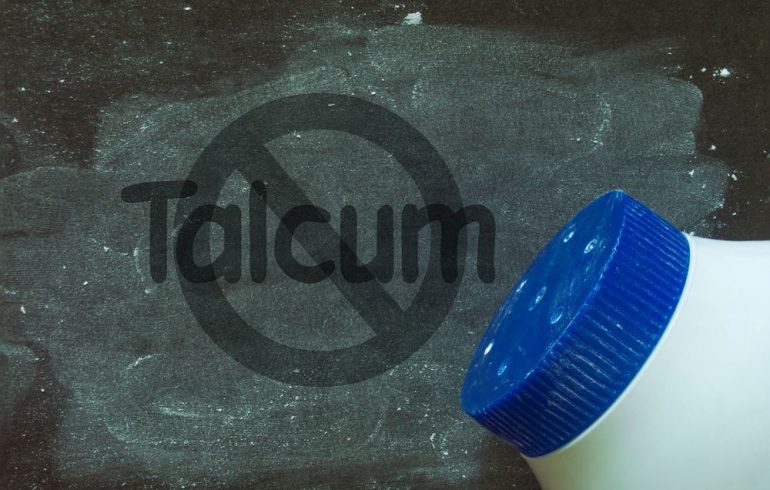“Abandon all hope, ye who enter here.” That is the message figuratively inscribed above the door of the Circuit Court for the City of St. Louis, at least if the American Tort Reform Association’s (ATRA) latest “Judicial Hellhole” rankings are to be believed. ATRA, a business-lobbying group that describes itself as an organization “dedicated to repairing our justice system,” publishes a list each year of the jurisdictions it deems most hostile toward organizational defendants. Also making the list were Madison and St. Clair Counties across the river in Illinois, which comprise the general Metro East portion of Greater St. Louis.
St. Louis topped the list for the first time this year largely due to three major verdicts totaling $197 million against Johnson & Johnson (J&J), the maker of the popular Baby Powder and Shower-to-Shower products. Those lawsuits allege that J&J was aware of a causal link between the talcum powder found in those products and women developing ovarian cancer and that the company deliberately concealed this information from the public. There are several studies suggesting a link between use of products containing talcum powder and ovarian cancer, although whether these studies actually constitute proof of that link is a matter of considerable scientific debate. Ultimately most damning to J&J have been its own internal documents, which reveal that the company at least suspected such a link starting in the 1970s and chose to prepare for litigation over the risk rather than disclosing it to the public. Particularly troubling to many jurors has been one document that, after observing declining sales of the products due to a perception of a health risks, suggested the company’s marketing efforts be targeted at black and Hispanic women.
But why were these lawsuits brought in the state trial court for St. Louis? After all, the company is based in New Jersey and does not have offices within St. Louis city limits, and only a handful of the dozens of plaintiffs involved in each case were from the St. Louis area. Moreover, lawsuits of this nature are often filed in or later removed to federal courts, which have a special procedure known as diversity jurisdiction for hearing large lawsuits involving plaintiffs and defendants from different states, even when no federal law is involved. Indeed, more than 80 federal talcum suits have been centralized in multi-district litigation now underway in a New Jersey federal court.
Yet these litigants were not alone. As Bloomberg BusinessWeek observed in September 2016, “Hundreds of plaintiffs with product liability claims… have been flocking to downtown St. Louis to a venue that over the past three years has developed a reputation for fast trials, favorable rulings, and big awards.” ATRA cites this being due to Missouri’s lax venue law allowing suits to be filed in any county where at least one claimant resided when injured and its standard for expert testimony regarding scientific evidence, which is seen as being looser than the “Daubert” standard employed in federal courts and adopted by most other states and which allegedly opens the door to “junk science.” Missouri, which the ATRA refers to as the “Show Me Your Lawsuits State,” also has a law allowing for “mass tort cases” of up to 99 plaintiffs who are joined together to share expenses but are given separate trials because the individual plaintiffs aren’t claiming identical damages (in contrast with a class action suit). Many lawyers likewise consider the jury pool in St. Louis City as being favorable toward large verdicts, and talc defendants have contended that local plaintiffs’ firms have tainted the St. Louis jury pool with extensive television advertising that prejudice jurors before a case has even begun. Lastly, a 2010 decision by the Eighth Circuit (the federal appellate court encompassing Missouri) makes it more difficult for state-court defendants to remove their cases to federal court under diversity jurisdiction.
Perhaps it’s not surprising then that in summer 2016, two thirds of the then-roughly 260 separate talcum-powder lawsuits comprising approximately 2,100 individual claims nationwide had been filed in the St. Louis Circuit Court, especially after a $72 million verdict that included a whopping $62 million in punitive damages. This process of plaintiffs selecting which court they think will be most favorable to their case is known as forum shopping or litigation tourism, and it isn’t unique to talc or product-liability suits (e.g., as much as a staggering 43% of U.S. patent cases have been filed in the Eastern District of Texas in recent years). And it’s clear that this isn’t just a case of jurors tending to treat out-of-state corporations harshly: in May 2016, out-of-state plaintiffs obtained a $46.5 million judgment against St. Louis-based Monsanto after alleging they developed lymphoma from eating foods contaminated by Monsanto products. That said, whenever plaintiffs from across the country are flocking to one particular court, it does at least raise the question whether defendants are getting a raw deal.
Nevertheless, the Missouri Association of Trial Attorneys has countered by calling the Judicial Hellhole list fake news designed “to scare state politicians into making anti-consumer changes in the law in order to make the label go away.” To be sure, the Missouri plaintiffs’ bar has reason to actually be pleased with St. Louis’ newfound status as a litigation hotspot, but on the other hand, the ATRA is a lobbying group funded by and composed of large corporations that have an interest in curbing what they see as excessive litigation and verdicts. If nothing else, the unique traits making St. Louis’ Circuit Court so attractive to plaintiffs underscore the importance of corporate defendants hiring local counsel to defend themselves within its hostile confines.
Meanwhile, the science is still out on the link between talc and ovarian cancer, and the St. Louis Circuit Court recently decided to proceed with new talcum suits despite pending appeals from the 2016 judgments. It seems J&J won’t be escaping its talcum-powder demons anytime soon.

